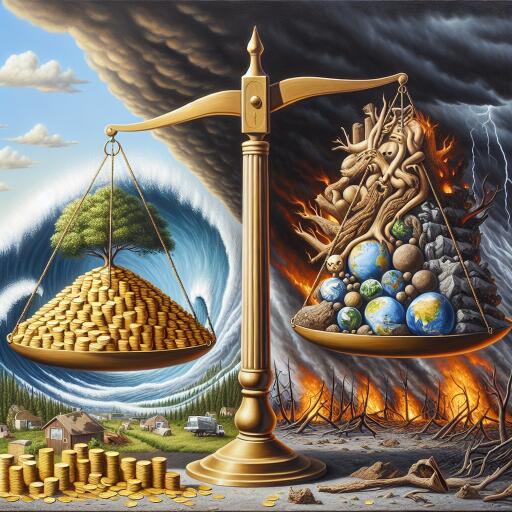
Economic Greed over Environmental Concerns: Root Cause of Natural Disasters
In a world grappling with the consequences of climate change, the story of the Chipko movement from the 1970s serves as a powerful testament to the struggle between economic ambitions and the necessity to preserve our environment. Starting in the verdant regions of Uttarakhand, a state nestled in the heart of the Himalayas, this peaceful protest against deforestation highlighted the intrinsic value of nature to rural communities, particularly emphasizing the role of women as custodians of the forest. The movement’s legacy is a poignant reminder of the ongoing conflict between development and environmental conservation.
However, the narrative of conservation versus development takes a darker turn with the recent tunnel collapse in Uttarakhand during 2023. The incident, which trapped 41 workers for more than two weeks, underscores a troubling trend of increased natural disasters in the country. These events raise critical questions about the relentless exploitation of natural resources and the adequacy of government policies in safeguarding our ecological heritage.
The tragic history of significant natural disasters in India, including the devastating cyclones, earthquakes, floods, and more, reflect a pattern of ecological disturbances with far-reaching impacts on human lives and property. The toll on human life is staggering, with disasters causing millions of internal displacements, highlighting a dire need for sustainable development models.
One such controversial project is the Char Dham highway initiative aimed at linking four sacred pilgrimage sites in Uttarakhand. While intended to boost accessibility and tourism, the project raises serious environmental concerns. The fragile Himalayan ecosystem, already under threat from climate change and urban sprawl, faces further peril from large-scale infrastructure projects. Geologists and environmentalists question the viability of such endeavors in a region with limited carrying capacity and significant geological vulnerabilities.
The allure of Himalayas, beyond their breathtaking landscapes, is marred by the consequences of irresponsible tourism. The influx of tourists not only contributes to economic growth but also exacerbates environmental degradation through pollution and waste generation. Future projections indicate a dramatic increase in tourist activity, necessitating immediate action to manage waste effectively and protect the delicate Himalayan ecosystem from irreversible damage.
Recognizing the urgency of addressing ecological destruction, a 2023 report by a prominent environmental committee has called for a comprehensive action plan. This plan emphasizes the significance of prioritizing environmental considerations over economic gains, clamping down on illegal construction, and ensuring rigorous assessment processes for new projects. Despite legislative efforts to safeguard biodiversity and forest conservation, critiques highlight a potential increase in commercial exploitation and the undermining of indigenous rights.
Moreover, India’s standing in the global Environmental Performance Index underscores a stark incongruity. A country that venerates nature in its cultural and religious practices languishes at the bottom of environmental health rankings. This paradox calls for a reevaluation of our development strategies, advocating for approaches that harmonize with nature, respecting the voices and needs of local communities reliant on these resources.
The saga of Chipko and subsequent environmental challenges paint a vivid picture of the ongoing clash between economic aspirations and environmental stewardship. As we move forward, it becomes imperative to heed the lessons from our past, recognizing the invaluable role of our ecosystems and the urgent need for sustainable development practices. Only by balancing our economic ambitions with environmental sustainability can we hope to prevent future disasters and ensure a flourishing planet for generations to come.





Leave a Reply